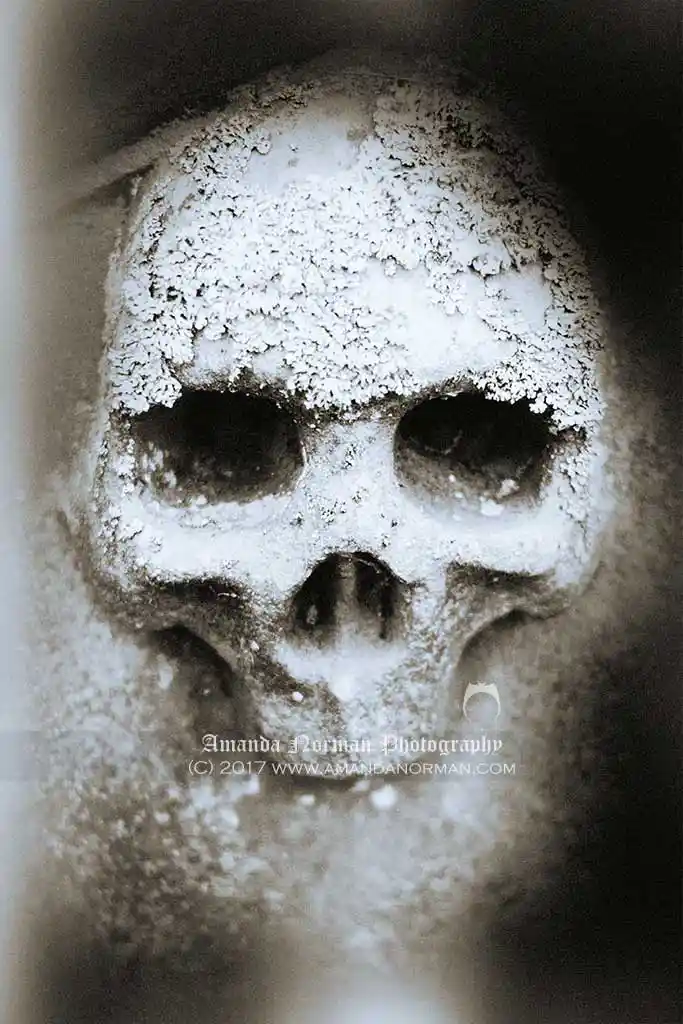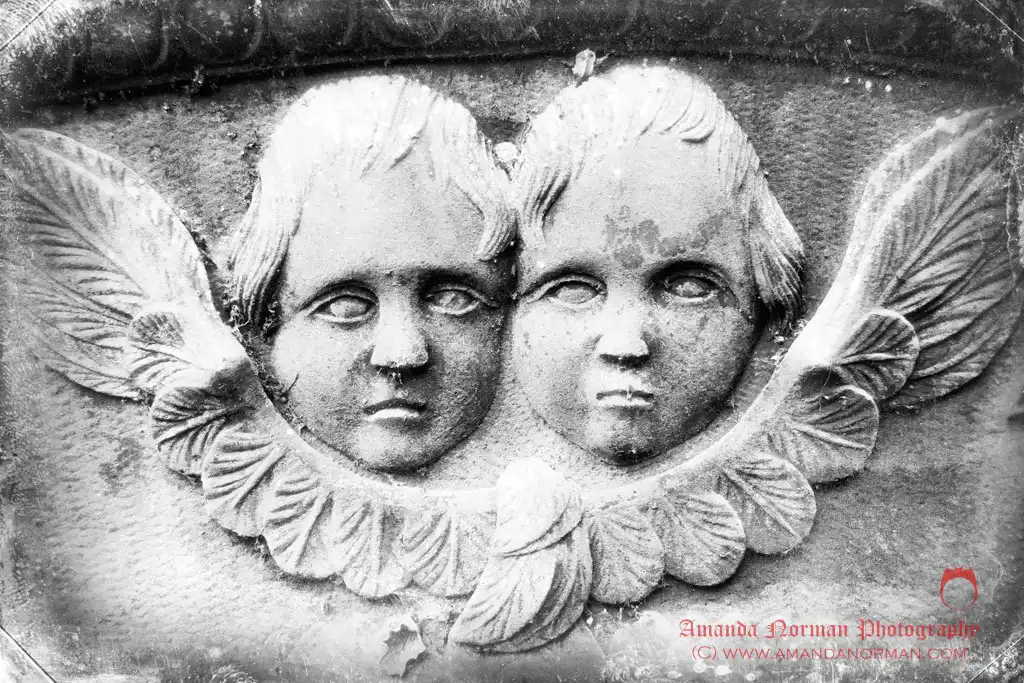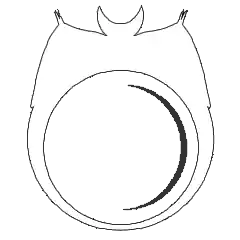Cemetery death heads represent a fascinating blend of art, culture, and evolving religious perspectives. These gravestone carvings, especially the iconic symbols such as skull and crossbones, provide unique insights into the societal attitudes towards mortality throughout history. As a photographer with a passion for this subject, I enjoy documenting the transformation of these somber yet beautiful motifs.
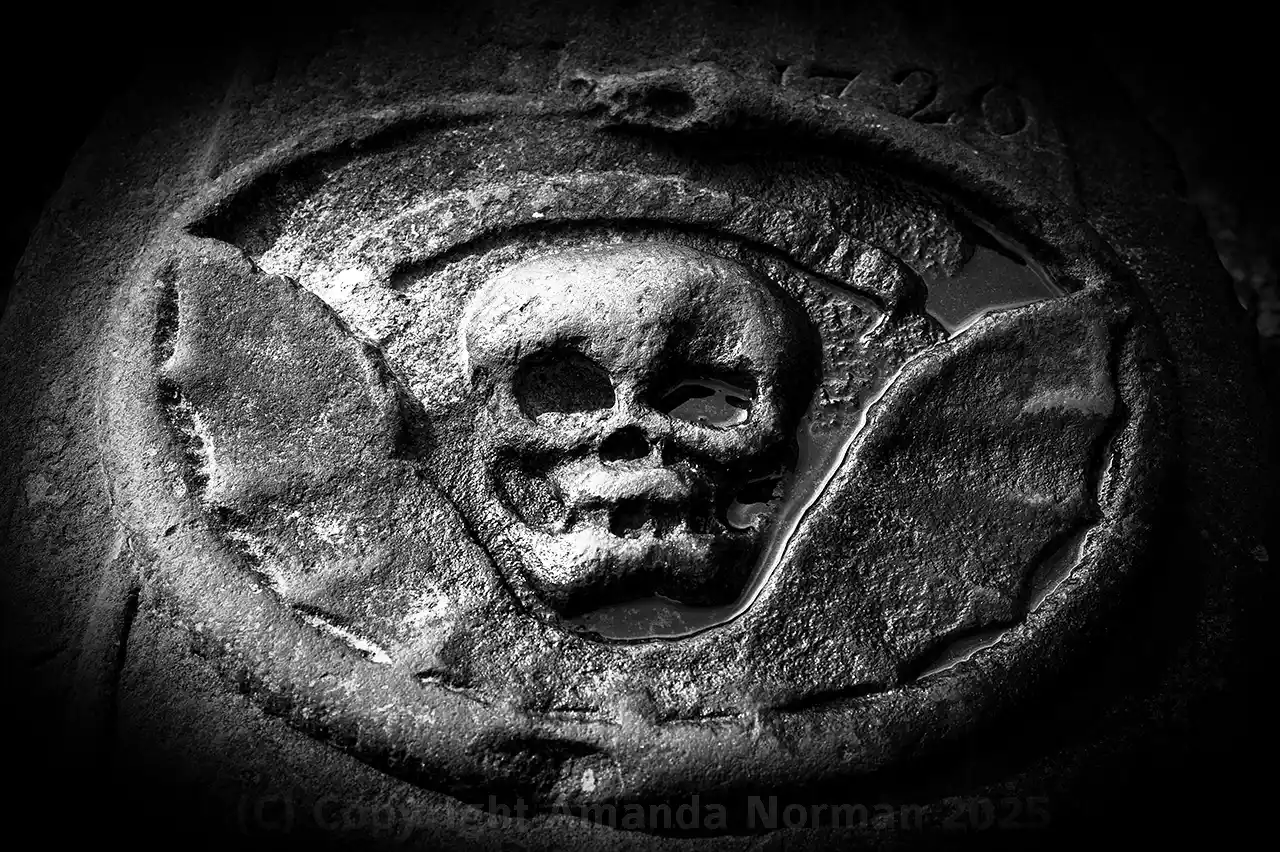
The earliest examples are crudely carved skulls with crossed femurs underneath. The changing fashion throughout the centuries softened this look by changing the skull to an angelic face. The crossed femus were replaced with wings or foliage, each having their own meaning. Wings and feathers are depicting the ascent to Heaven. A skull represents ‘death‘.
From crudely etched skulls to exquisitely carved cherubs with wings, the designs seen on headstones vary considerably. Cherubs, often depicted as innocent and divine beings, symbolise the hope and spiritual beliefs of the era they originated from. Conversely, skulls adorned with wings, serve as reminders of life’s impermanence and the inevitability of death. Exploring these differences reveals much about how communities expressed their grief and reverence for the deceased.
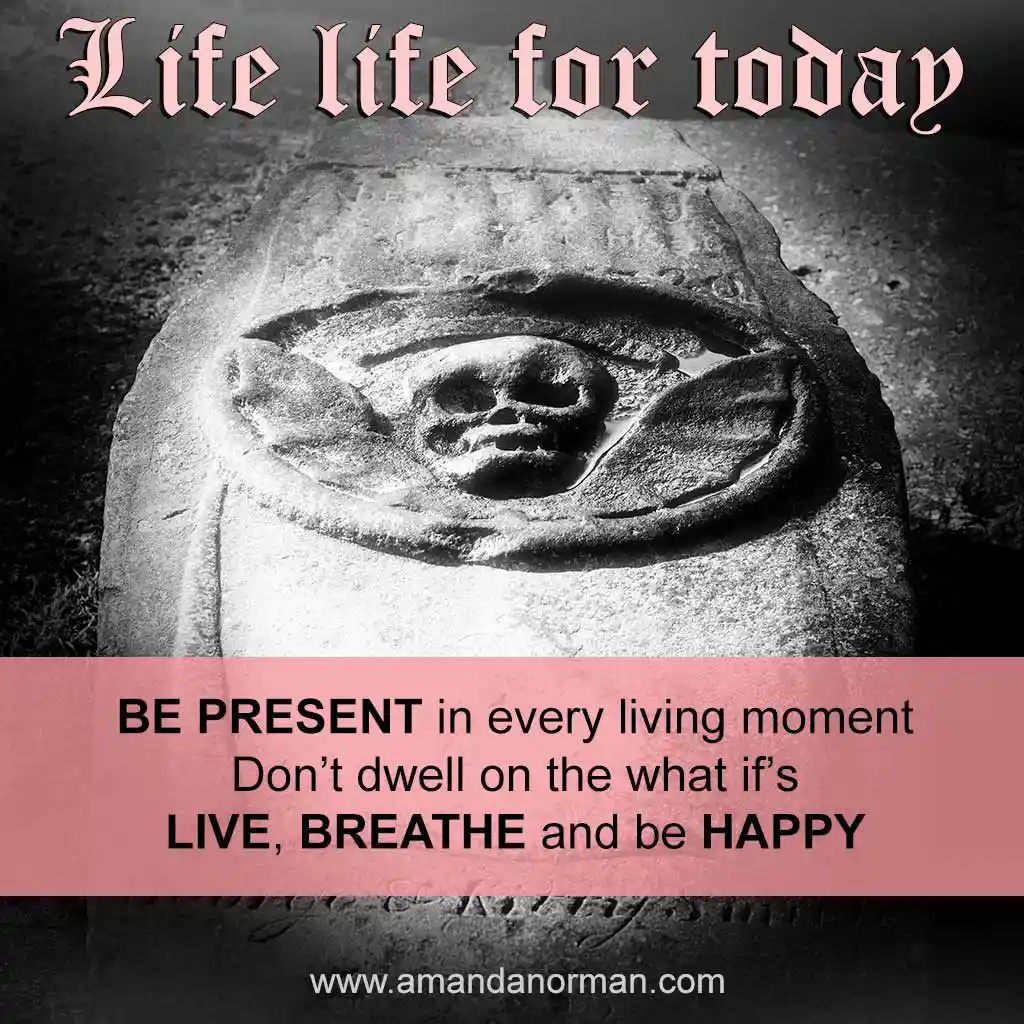
To take a look at the changing fashion, please read my article, Cemetery Death Heads. Below, I’ve compiled a selection of my favourite photographs showcasing the different styles.
Amanda’s favourite death heads
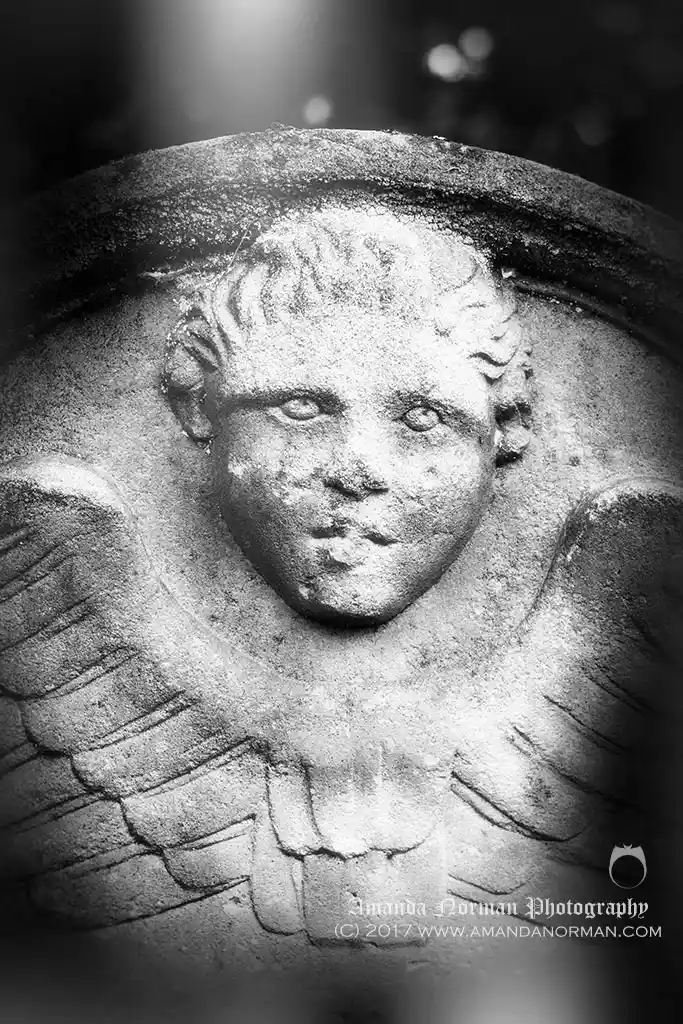
Lastly, the cemetery death heads we see today on headstones are common ‘Memento Mori‘ symbols from the 16th to 17th centuries. They warn us that no matter what our status is in life, we are all the same in death. In addition, live life for today as death is always lurking in the form of plagues or disease.
Reading Chris Raymond’s article, Cemetery Headstone Symbols: Death’s Head will provide you with further information. I especially like his reference to collar and shoulder’s replacing the wings or femurs on later examples.


